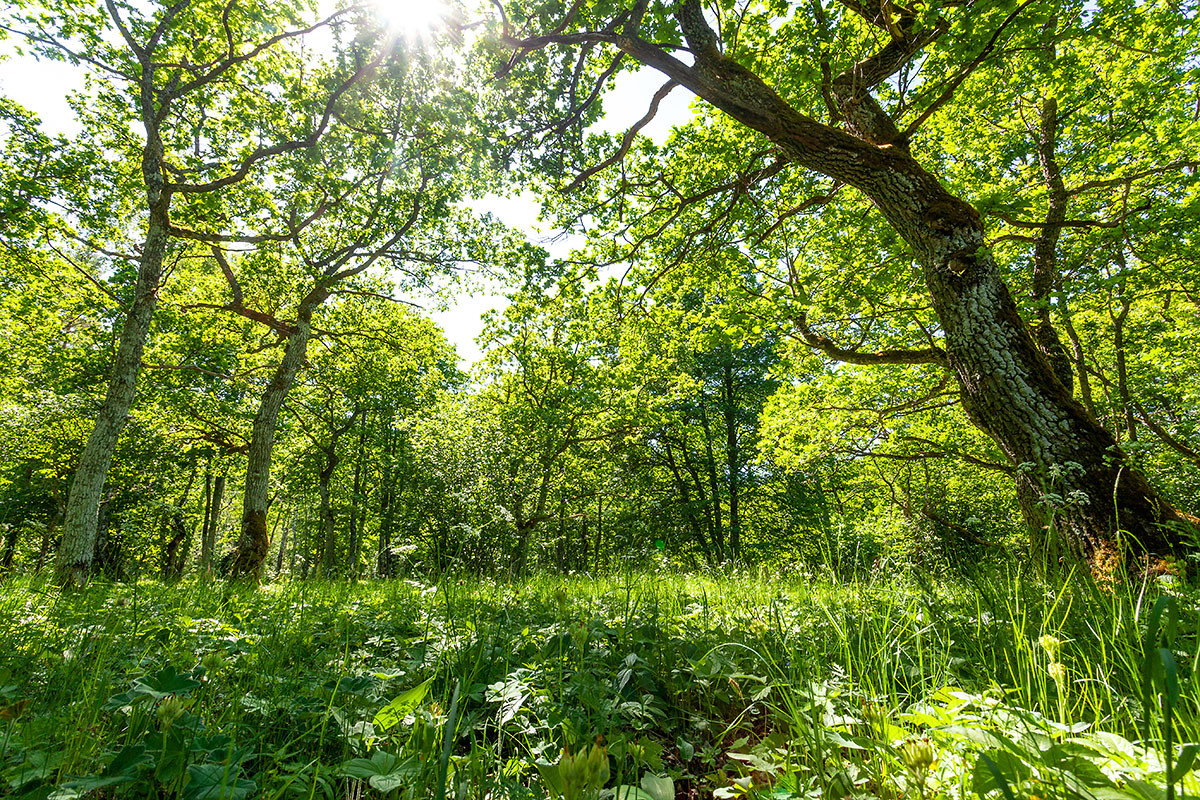The main reason for the loss of heritage communities was the abandonment of handicraft, and intensive agriculture

Heritage meadows or semi-natural communities are also called heritage communities. Both names refer to a close connection with man and to the fact that we have inherited these communities from our ancestors. Semi-natural communities have emerged with the help of humans, as a result of long-term and permanent nature-friendly management. The ancient Estonians managed nature economically and sensibly, with care and love. These communities have been part of their homes and lives, thus becoming part of their traditions, history, and culture. Without humans, these communities cannot survive.
It is important to know that the species associated with heritage meadows are native to Europe: grassland species inhabited ancient natural open and semi-open ecosystems that were widespread in Europe since at least the Pleistocene era (2.4 million years ago), hundreds of thousands of years before humans appeared [1]. The widespread distribution of the grasslands and the large herbivores which have kept them historically open over millions of years is also the reason why many European species are associated with grasslands and semi-open ecosystems. During the last millennia, however, man and cattle have played a leading role in keeping landscapes open, and thus the natural values of heritage meadows and related species are preserved only with our help.
Semi-natural communities were most numerous at the end of the nineteenth century, when the inhabitants of many farms carefully managed every meadow and small part of the forest. Semi-natural communities provided economic benefits (hay was used as winter feed for the animals) and were also aesthetically pleasing in appearance. Wooded meadows have been a part of the typical Estonian farm landscape for centuries, reflecting the sustainable management of nature and the way of life at that time. It takes almost a hundred years for a wooded meadow to develop, and they may have survived in the same place for thousands of years.
The main reason for the loss of heritage communities was the abandonment of handicraft, and intensive agriculture. Many heritage communities were turned into arable land or allowed to overgrow in the twentieth century. The current trend of supporting the restoration and maintenance of heritage communities at the national level is not only for nature conservation, but also for the protection of heritage culture. This shows the close link between semi-natural communities and culture and the need to address them together.
There is a lot of folklore associated with the wooded meadow, especially local legends. An example is the legend of the stone-throwing competition between Kalevipoeg and the Old Devil, which is said to have taken place in a grassland near Lake Võrtsjärv [2]. In folk songs, the meadows are bright and beautiful places, which are associated with something beautiful and romantic. The song ‘Ema viis hälli heinamaale’ (‘Mother takes a cradle to the meadow’) is well-known, although there is different kind of folklore as well: at the meadow, people feared getting lost or encountering the devil or other spirit creatures – who could be both scary and friendly fairies – who had turned into haystacks [3].
There are many stories, poems, and songs about grasslands. The romantic Nipernaadi walked around in grasslands. Arno Tali missed his home meadows. Blonde girls dance on the meadows of Saaremaa at night and a beautiful meadow is right behind the hill:
As the song goes, ‘The beautiful meadow was right behind the hill,
it looked dark and bare next to the blue sky.
The grass was so fresh and green there,
so wonderfully fresh and so evergreen’ [4].
Last modified: 10.11.2021
__________________________________________________
[1] Dengler, J., Janišová, M., Török, P., Wellstein, C. 2014. Biodiversity of Palaearctic grasslands: a synthesis. Agriculture, Ecosystems & Environment, 182, 1–14.[1] T. Kukk. Pärandkooslused: kas pärandame nad tulevikule? Eesti Loodus, 7/2004. http://www.eestiloodus.ee/artikkel755_753.html
[2] http://www.folklore.ee/rl/folkte/myte/kalev/1.html
[3] M. Hiiemäe, Poollooduslike kooslustega seonduvat rahvapärimuses. Pärandkooslused. Õpik-käsiraamat, toim. T. Kukk. Tartu: Pärandkoosluste Kaitse Ühing, 2004.
[4] Jaan Kross, „Imeline aas“.